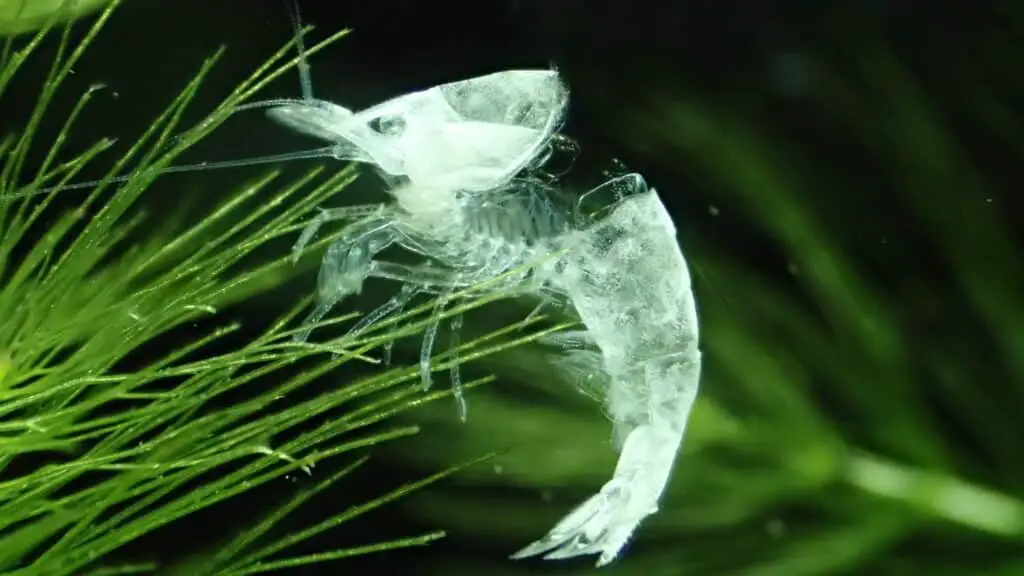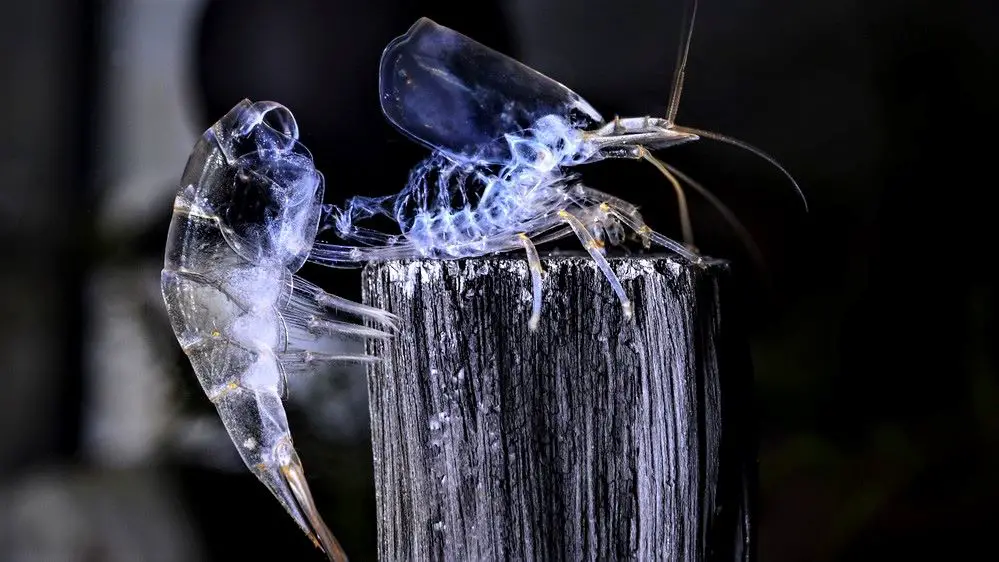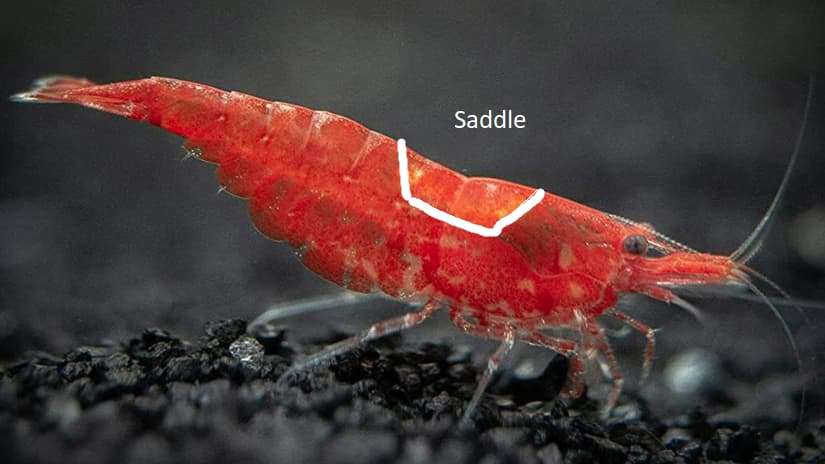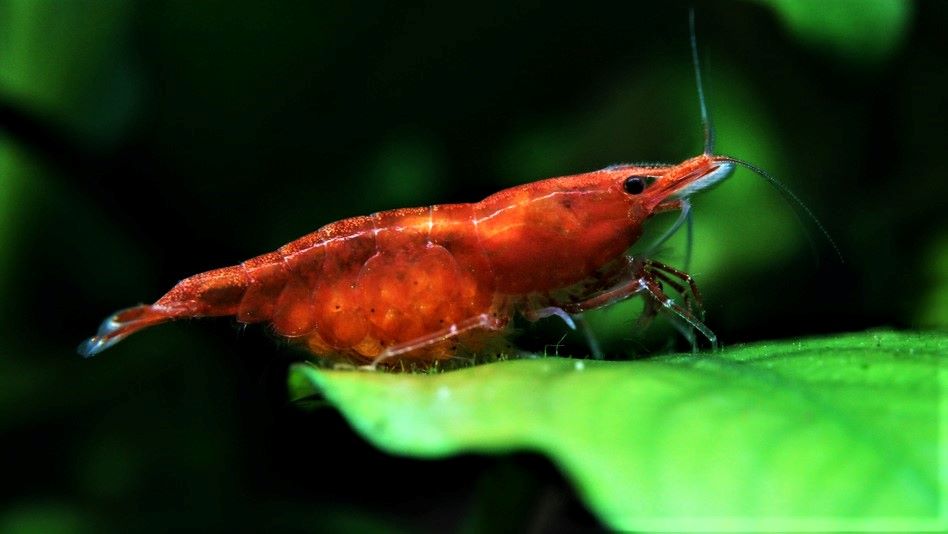Have you ever noticed your cherry shrimp suddenly looking a bit larger and leaving behind a shell that looks just like them? This is a natural process known as molting. Cherry shrimp, like many other crustaceans, undergo molting to grow and accommodate their increasing size.
This fascinating process involves the shedding of their old exoskeleton and the formation of a new, larger one. But what triggers this process, and how exactly does it happen? Let’s dive in and explore the world of cherry shrimp molting.
Cherry shrimp molt as a part of their growth process. When their current exoskeleton becomes too small and restricts their movement, they shed it and form a new, larger one. This molting process involves several stages, including preparation, hormone release, shedding, and hardening of the new exoskeleton. It’s essential for the shrimp’s survival and growth. After molting, cherry shrimp often consume their old exoskeleton, which is a rich source of essential minerals like calcium. This behavior helps them recycle nutrients, reduce waste, and deter predators.
As a shrimp enthusiast, I’ve spent countless hours observing and caring for my cherry shrimp. Over the years, I’ve witnessed the fascinating process of molting numerous times. Yet, each instance feels just as magical and intriguing as the first.
When I started my shrimp-keeping journey about 20 years ago, I was initially baffled by the sight of an empty shrimp shell in the tank. I remember the panic that set in as I mistakenly thought I’d lost one of my tiny aquatic friends. After some frantic research, I discovered that my shrimp were not only alive and well, but they were growing, and this was a natural part of their life cycle.
Understanding and managing the molting process wasn’t always smooth sailing. There were challenges along the way. For instance, I noticed that some of my shrimp seemed lethargic and lost their appetite before molting. I learned that these were signs of an impending molt and that it was crucial to provide a stress-free environment during this period.
Another challenge was ensuring that my shrimp had the necessary nutrients for a successful molt. I experimented with different foods and supplements, eventually finding that a balanced diet and a calcium supplement significantly improved their molting process.
Through these experiences, I’ve gained a wealth of knowledge about cherry shrimp and their molting process. In this post, I’ll share these insights with you, delving into why and how cherry shrimp molt, and how to support them through this critical phase of their life.
Why Do Cherry Shrimp Need to Molt?
Molting is a vital process for cherry shrimp and is intrinsically linked to their growth and survival. As cherry shrimp grow, their current exoskeleton, which is a rigid structure, becomes too small and starts to restrict their movement. Unlike us, shrimp can’t stretch or expand their outer shell; it’s not flexible like our skin. So, to continue growing, they need to shed this old, restrictive exoskeleton and form a new, larger one. This shedding and regrowth process is what we refer to as molting.
But growth isn’t the only reason cherry shrimp molt. The process also allows them to repair any damage to their exoskeleton. If a shrimp has been injured or if its shell has been damaged, molting provides an opportunity to shed the damaged shell and grow a new, undamaged one.
Moreover, molting plays a crucial role in reproduction. Female cherry shrimp often molt just before they are ready to mate. The act of molting releases pheromones into the water, signaling to males that she is in a receptive state.
In essence, molting is a multifaceted process that is essential for a cherry shrimp’s growth, survival, and reproduction. It’s a testament to the remarkable adaptability of these tiny creatures, enabling them to thrive in their aquatic environments.

What are the Stages of the Molting Process in Cherry Shrimp?
The molting process in cherry shrimp is a fascinating sequence of events that can be broken down into several stages. Each stage plays a crucial role in ensuring the shrimp can successfully shed its old exoskeleton and grow a new one.
- Preparation: This is the initial stage where the shrimp starts to form a new exoskeleton beneath the existing one. During this phase, the shrimp may appear less active and may eat less than usual.
- Hormone Release: As the new exoskeleton forms, the shrimp releases special hormones. These hormones soften the old exoskeleton, preparing it to be shed. At this stage, the shrimp’s shell may appear slightly cloudy or discolored.
- Shedding: This is the actual molting stage where the shrimp wriggles out of its old exoskeleton. The shrimp often arches its back, splits the old shell along its back, and pulls itself out. This process happens quite quickly, often within a matter of minutes.
- Hardening: Once the old shell has been shed, the new exoskeleton is initially soft and flexible. The shrimp is particularly vulnerable during this time. Over the next few hours, the new shell absorbs calcium and other minerals from the water and hardens, providing the shrimp with its new protective layer.
- Recovery: After the new exoskeleton has hardened, the shrimp will usually resume its normal behavior. It’s common for the shrimp to eat its old shell, recycling the valuable minerals it contains.
Understanding these stages can help shrimp keepers provide the right care and conditions for their shrimp, particularly during the vulnerable molting period.

How Can I Tell if My Cherry Shrimp is About to Molt?
Recognizing the signs that a cherry shrimp is about to molt can be a bit tricky, especially for new shrimp keepers. However, with careful observation, you can pick up on some subtle changes in your shrimp’s behavior and appearance that may indicate an impending molt.
- Decreased Activity: One of the first signs that a shrimp is preparing to molt is a decrease in activity. The shrimp may hide more often and generally be less active than usual. This is because the shrimp is conserving energy for the molting process.
- Reduced Appetite: Shrimp about to molt often eat less. If you notice that a usually voracious eater is suddenly showing less interest in food, it could be a sign that a molt is imminent.
- Cloudy Exoskeleton: As the shrimp prepares to shed its old shell, it may start to look a bit cloudy or dull. This is due to the new exoskeleton forming beneath the old one.
- Hiding: Shrimp are vulnerable during and immediately after molting, and their instinct is to find a safe place to hide during this time. If you notice a shrimp spending more time hiding, it could be a sign that it’s preparing to molt.
- Back Arching: Just before the molt, the shrimp may arch its back repeatedly. This is the shrimp trying to crack the old shell along its back to wriggle out.
Each shrimp is unique, and not all shrimp will display all these signs. Regular observation and getting to know the normal behavior of your shrimp will help you recognize when something is different and a molt might be on the horizon.

How Can I Support My Cherry Shrimp During the Molting Process?
Supporting your cherry shrimp during the molting process involves providing optimal conditions and nutrition. Here are some ways you can help your shrimp have a successful molt:
- Maintain Water Quality: Good water quality is crucial for the overall health of your shrimp, and this is especially true during the molting process. Regularly test your water parameters, including pH, temperature, hardness, and levels of ammonia, nitrite, and nitrate. Sudden changes in water conditions can cause stress and potentially disrupt the molting process.
- Provide a Balanced Diet: A diet rich in calcium and other minerals is essential for shrimp to form a new, healthy exoskeleton. Foods like spinach, kale, and high-quality shrimp pellets can provide these necessary nutrients.
- Offer Plenty of Hiding Places: Shrimp are vulnerable during and immediately after molting, so they need safe places to hide. Providing plenty of hiding spots with plants, rocks, or shrimp hides can help your shrimp feel secure during this critical period.
- Avoid Stress: Try to minimize stress as much as possible. This means avoiding sudden changes in water conditions, handling the shrimp, or introducing new tank mates just before or during the molting process.
- Leave the Old Shell in the Tank: After molting, shrimp often eat their old shell to reabsorb valuable minerals. Unless the shell is causing a problem in the tank, it’s usually best to leave it in there for the shrimp to consume.
By providing a supportive environment and proper nutrition, you can help ensure your cherry shrimp successfully navigate the molting process.
What Should I Do with the Old Exoskeleton After My Cherry Shrimp Has Molted?

After your cherry shrimp has molted, you might be wondering what to do with the old exoskeleton left behind. It might be tempting to remove it, but in most cases, it’s actually beneficial to leave the old shell in the tank.
The old exoskeleton is a rich source of calcium and other minerals that the shrimp need for their new shell. Shrimp often eat their old shell after molting, recycling these valuable nutrients. This behavior not only benefits the shrimp but also helps to reduce waste in the tank.
However, if you notice that the old shell is not being consumed and is starting to decay, it might be a good idea to remove it to maintain water quality. Similarly, if there are many old shells in the tank that aren’t being eaten, you might want to remove some of them to prevent them from accumulating and potentially causing issues.
The best course of action is usually to leave the old exoskeleton in the tank for the shrimp to consume unless it starts to decay or there are too many old shells accumulating. This approach allows the shrimp to benefit from the nutrients in the old shell and supports a more natural environment in the tank
Conclusion
In summary, the molting process is an essential part of a cherry shrimp’s life, facilitating growth, repair, and reproduction. Recognizing the signs of an impending molt and understanding how to support your shrimp during this process can greatly enhance their health and longevity.
Remember to maintain good water quality, provide a balanced diet, offer plenty of hiding spots, and minimize stress. And don’t be too quick to remove the old exoskeleton after a molt – it’s a valuable source of nutrients for your shrimp.
Ultimately, the more you learn about your cherry shrimp and their needs, the better equipped you’ll be to provide them with a healthy and supportive environment.
If you have any questions or need further assistance, please don’t hesitate to reach out. If you can’t reach me here, check out Aquarium Shrimp Keeping on Facebook. We have a vibrant community of shrimp enthusiasts who are always ready to share their knowledge and experiences.
On a final note, remember that shrimp keeping is a journey, filled with fascinating discoveries and rewarding experiences. So, keep observing, keep learning, and most importantly, enjoy the process. Happy Shrimp Keeping!
FAQ
Q. How can I tell if my cherry shrimp is molting?
A. Signs that a cherry shrimp is about to molt include decreased activity, reduced appetite, a cloudy appearance of the exoskeleton, increased hiding, and back arching.
Q. How long does it take for cherry shrimp to molt?
A. The actual shedding of the old exoskeleton during molting happens quite quickly, often within a matter of minutes. However, the entire molting process, including preparation and hardening of the new shell, can take several days.
Q. How do you help cherry shrimp molt?
A. You can support your cherry shrimp during the molting process by maintaining good water quality, providing a balanced diet rich in minerals, offering plenty of hiding spots, minimizing stress, and leaving the old shell in the tank for the shrimp to consume.
Q. What are the stages of shrimp molting?
A. The molting process in cherry shrimp involves several stages: preparation, hormone release, shedding of the old exoskeleton, hardening of the new exoskeleton, and recovery.
Q. How often do cherry shrimp molt?
A. The frequency of molting in cherry shrimp can vary depending on their age and health. Young, growing shrimp may molt more frequently than older, fully grown shrimp. On average, cherry shrimp may molt every 3-8 weeks.
